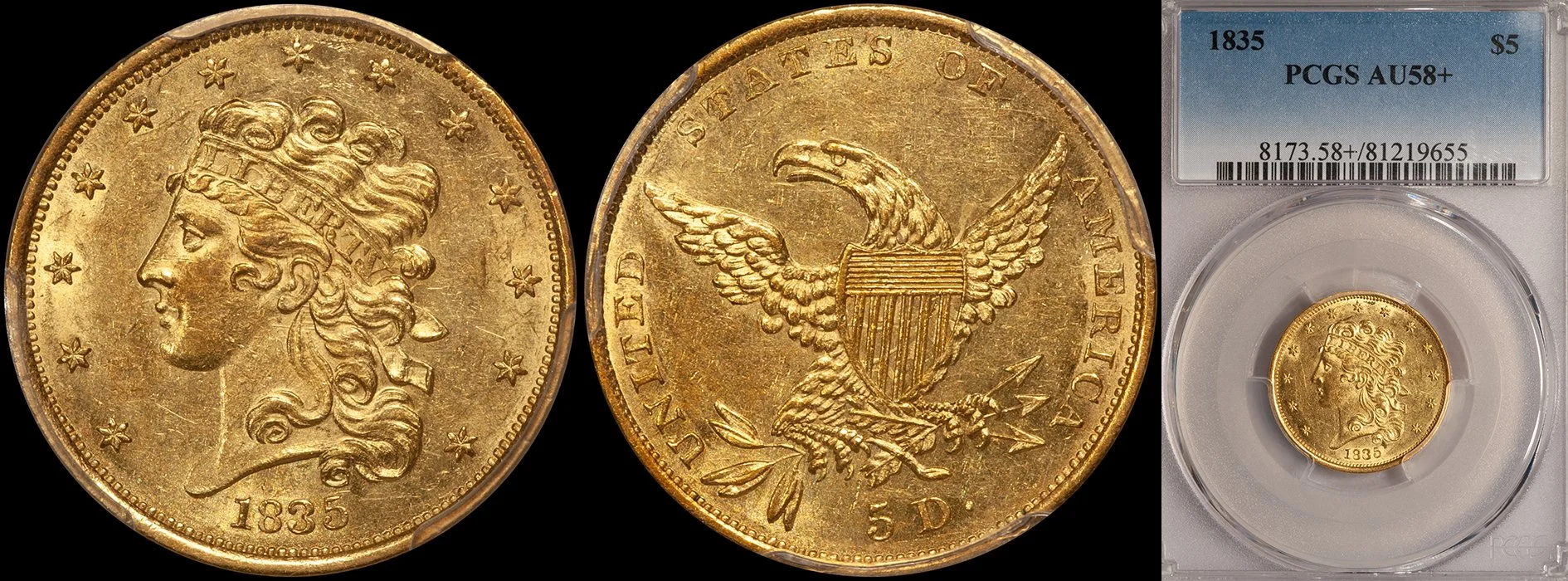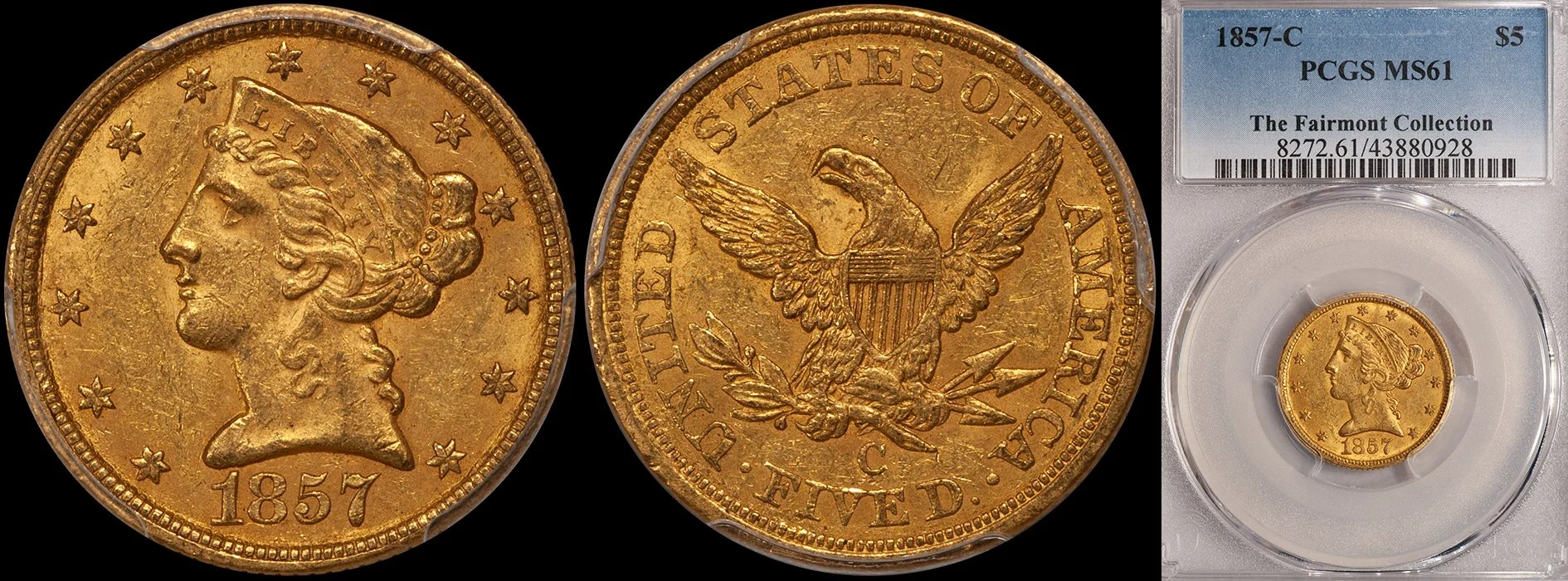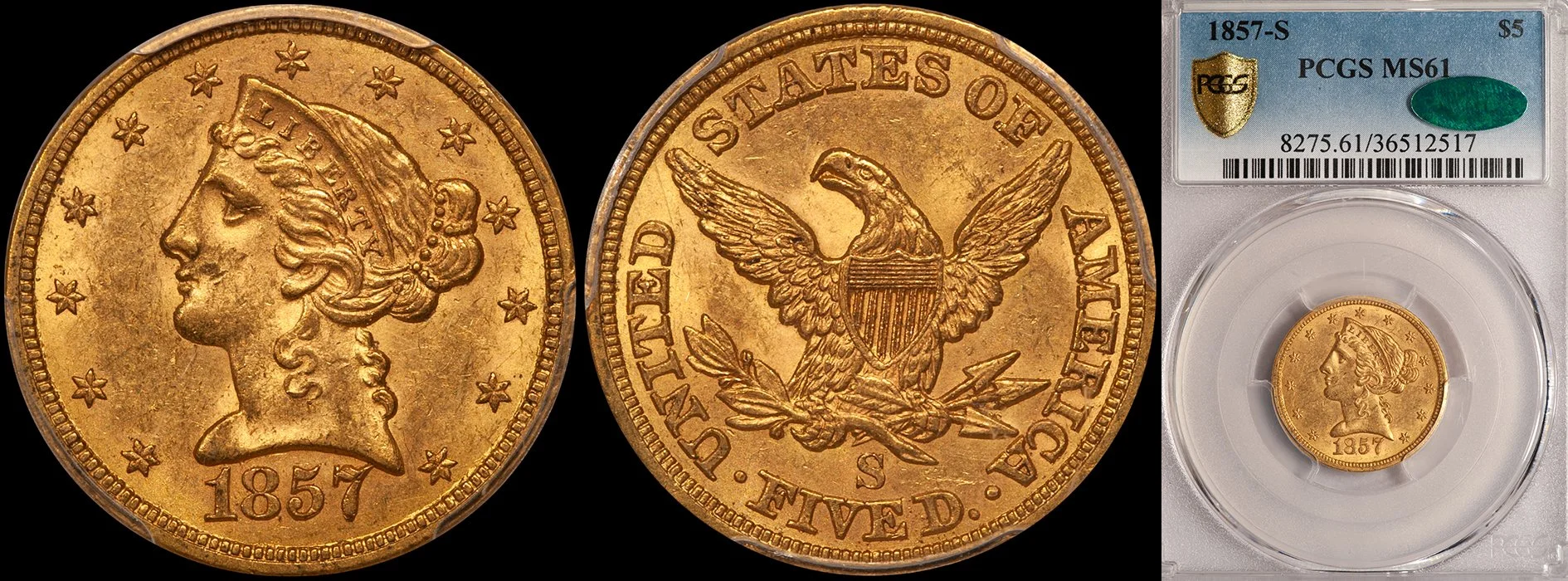Looking at Gold Like A Copper Collector Views Coins
/This blog is inspired by reader D.N. who recently sent me a nice unsolicited email which included the following statement: “…you may be the only dealer of any US series that strictly employs an advanced copper collector approach to quality: originality, luster, surfaces, color, eye appeal, etc. with little compromise.”
While I didn’t really set out to approach my specialty (US gold coinage, 1795-1933) with a copper collector’s mindset, I understand this comment and am appreciative of it.
I have a very strict set of standards when it comes to purchasing coins for my inventory and I’d like to share some of them with you. These will deal with the four categories mentioned above by D.N. We will also briefly touch on strike which is the least important factor for copper—and gold—collectors to consider.
To me, “originality” is the single most important factor in determining whether or not I will buy a coin. The term “original” is almost constantly misused by dealers and collectors alike. When the term is used, there is, obviously, no way of knowing for certain whether or not a coin has never been cleaned, dipped, lightened, processed or otherwise altered in an attempt to make it appear “better” or “different.” It should be stressed that originality is essentially an opinion, not a fact.
I’d estimate that at least 90% of all circulated US gold coins have been cleaned at one time. Some of these were lightly cleaned or wiped with a cloth 100+ years ago, and they have acquired secondary toning that is nearly impossible to tell apart from totally original first-generation color.
I have written about hoards of US gold coins which have been repatriated from overseas sources and how many of the coins from these sources have a very original appearance. Since these haven’t been available to dealers and collectors for many generations, their color is likely totally original. We can state with certainty that banks in Switzerland were not busy dipping their No Motto eagles in an attempt to make their AU50 coins appear to look AU58.
As a rule of thumb, I apply very rigorous standards towards common date issues. For example, I will only buy an 1848 half eagle (a very common date in grades through MS62 to MS63) if it is extremely original in my opinion. But on a coin like an 1865 half eagle which is rare to very rare in any grade, I am much less strict and I will knowingly buy (and sell) an example even if it has been lightly cleaned.
1888 $3.00 in PCGS MS62
For coins grading About Uncirculated and higher, luster is a very important factor in evaluating gold coins; far more so than it is for copper.
There are numerous types of luster seen on gold coins and it is very important for collectors to recognize them. Luster can be a product of the design of a coin, the mint at which it was struck, and how new the dies used to strike the coin were.
The various types of luster seen include frosty, satiny, semi-prooflike, and prooflike with hybrids of these types seen.
Collectors will quickly learn, for example, that 1888 Three Dollar gold pieces typically show thick, frosty luster, while 1861 Three Dollar gold pieces have a more satiny texture. Low mintage dates (such as the 1881 or the 1885) tend to come prooflike.
Since the advent of third-party grading, numerous circulated gold coins have been treated in an attempt to simulate mint luster. This often fools novice collectors but more experienced buyers are turned-off by these bright, shiny coins.
reverse of a double eagle with a reeding mark, around 2 o'clock
The term “surface” when it applies to gold coins really means the preservation of the obverse and the reverse, particularly in regards to marks which are as a result of circulation. Gold is the softest coinage metal and when a gold coin is transported to banks loose in bags or when it enters the course of circulation, it is subject to acquiring deep, detracting marks. This is even more so with large coins like double eagles.
To my way of thinking, marks are most detracting when they are in prime focal points. A reeding mark (from contact with the edge of another coin) placed right on the face of Liberty is a deal-killer for me 90% of the time, while the exact same mark hidden away on the lower reverse wouldn’t bother me in the least.
Surface issues can also be mint-made. Early gold coins often show adjustment marks which I don’t find detracting unless they are either excessively deep or they are placed right on the cheek of Liberty. Other issues might include black grease stains, reddish copper spots, small laminations, etc.
Finally, surface issues are often attempts to hide problems. I am continually amazed at the number of early gold or Territorial issues which are straight-graded by PCGS or NGC with areas on the surfaces which have been tooled, scratched, burnished, etc in an attempt to remove marks, spots, and problem areas on the coin.
It’s been written that the edge is the “third side” of the coin and most collectors (and dealers) are guilty of ignoring this when they examine a coin. Even if a coin is slabbed, the edge should be carefully examined to check for rim nicks or tooling.
The copper collector is likely far more concerned with color than the gold coin collector. This is due to the fact that original red coloration on copper makes a coin worth potentially many multiples more than a brown coin. This is not the case with gold coins although pieces with unusual but unquestionably natural color are beginning to command premiums among collectors.
In all the books I have written on gold coins, I discuss the “right” color for specific issues in great detail. I do this so a novice collector can learn to appreciate an original appearance. As an example, I think it’s important for the collector to know what the proper color is for an 1852-C quarter eagle.
Colors can range greatly. If the gold used to strike a coin is from the Comstock Lode, it is bound to have a different hue than gold from Appalachia. All US gold coins contain 90% gold, but the alloys used contain different percentages of copper or silver depending on the source of the ore.
A toned 1805 $2.50 graded PCGS AU50 by PCGS from the DWN archives
On rare occasions, US gold coins can show spectacular deep color. This may be the result of storage in a leather pouch or in an environment which is volatile enough to impart strong overlying colors. In the past, coins of this nature were either dipped or shunned but they have now become popular. They still do not command a huge premium (as would a rainbow toned silver coins or a multi-hued copper coin) but I expect premiums for coins of this sort to increase dramatically in the coming years.
“Eye appeal” is basically the sum of all the individual components we have touched on earlier. A coin has good overall eye appeal because it is original, minimally abraded and has attractive coloration.
The grading services have made eye appeal the primary component of establishing grade. You can have a coin with far more marks than you would expect for the grade (say AU55) still grade AU58, MS61, or even MS62 because it has excellent eye appeal. Collectors who grade strictly on technical standards will always have trouble buying coins as this set of standards is outdated; right or wrong.
Before we end this blog, a quick mention should be made regarding strike. I regard strike as a very minor factor in the decision to buy—or not to buy—a gold coin.
There are certain issues where a percentage of the known coins come poorly struck but sharply struck pieces are available; the 1844-D quarter eagle comes to mind. In the case of this issue, I could see passing on a weakly struck example which was otherwise nice while waiting for a sharply struck coin. I can also see passing on coins with weak mintmark (the 1850-C half eagle as an example) and waiting for an example with a sharp mintmark. In the case of an issue which is notorious for weak strikes (the 1856-D quarter eagle is a perfect example) the collector should never pass on an otherwise choice coin hoping for a better struck piece. It likely doesn’t exist.
Thanks—again—to reader D. N. and if you’d like to see a blog written based on one of your questions or comments, please feel free to email me at dwn@ont.com.
















